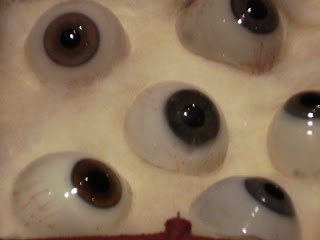Spent some time in the very interesting area called Annapolis-Royal, on the Western coast, bordered by the Bay of Fundy. The town of Annapolis-Royal was originally founded in 1605 by the French (as Port Royal), then the Scots started the fort (Charles Fort) here in 1629; back to the French in 1632 (they completed/enlarged the fort) and finally ceded to the British in 1713 and called Fort Anne. Below a picture of a battery in the reconstructed fort.
The town became the capital of the New France colony Acadia, and was also the capital of British Nova Scotia until Halifax became the capital in 1749. The French (Acadians) formally expelled in 1755, nevertheless ultimately remained in the area and French is still spoken everywhere. Annapolis-Royal is a small town, with tourism as a main driver of the economy.
The town borders the Annapolis River, a tidal river connected to the Bay of Fundy, which has the world's highest recorded tidal changes. In 1984, Canada invested in a tidal electric generating plant at Annapolis-Royal. Unlike solar or wind plants, this plant generates electricity on a regular, timely basis (twice a day, when the tide is going out). The turbine and plant extend 8 stories below the building below, and, with 160 billion tons of water being pushed through the Bay of Fundy each day, the tidal power ended up being 2 1/2 times greater than projected. This is the only tidal generating plant in North America and one of only five in the world. A major obstacle with the other plants in the amount of sediment that is brought in with the tide; however, here, with the basalt formation, sediment is not an issue, and the plant produces 30 million megawatts/year, plenty to take care of the 4500 homes in the area, cost of power here is the lowest in Nova Scotia. Excellent guide there who explained all of this to us.
The Bay of Fundy is a major area of whale feeding in the Summer months, and whale watching is very popular. I took a zodiac tour out to see them one very foggy morning, enjoyed the trip, although we have been spoiled by the dolphin shows in HH. Still enjoyable, learning about the whales.
Tough to get the camera ready when they surface; above a 45 foot humpback surfacing. Below, he is going down for a deep dive.
Further up the coast, the Bay of Fundy tides overcome small rivers that normally feed into the Bay and produce what is called a "tidal bore" (a wave caused by this reversal). Very interesting phenomenon; many people raft the reversal flow (they do seem to get pretty muddy); below one of the rafts going by us as we observe from the overlook at the interpretive center.
Dave/Glyndal this is for you. Our campsite was delightfully located right on the Bay of Fundy, where a steady, cool breeze made the need for any a/c unnecessary. Only negative was 30 amp service, but, hey, we survived; weather delightful, temps 70 ish with a light breeze.
Nice sunset during a busy weekend at the camp.
Next door to us (walking distance) lobster boat bringing in dinner. There is a wholesale/retail seafood market next to us that will steam the lobster (s); then we just bring them back to the rv, sweet.
A local homeowner, seems very prepared for the winter, thought this was cute.






















































